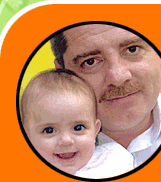Editorial: Investment needed for organ donations Dominion Post 21 January 2014 OPINION: New Zealand's organ donation rates are pitifully small. This means many people die every year because they fail to get a life-saving organ transplant. The Government has made some minor reforms, which seem to have helped the rate of tissue rather than organ donations - that is, of eyes, heart valves and skin. The situation remains lamentable. What must be done? Spain leads the world in this field, and we can learn from it. In that country there are about 35 deceased donors per million people, the commonly used measure. In New Zealand, the comparable figure is about nine. Last year there were a mere 36 deceased organ donors here, a figure that has changed little in a decade. But there are about 600 people who need a kidney transplant. The secret of Spain's success seems to be the creation of a highly-skilled section of the health workforce who specialise in dealing with the families of potential donors. These transplant donor co-ordinators form a national network of doctors and nurses. They are present in every hospital, and they spend a great deal of time with the families of desperately injured patients. Their success has been remarkable, raising the Spanish donor rate from 14 per million to the present world-leading rate of 35. It is often claimed that Spain has done so well because it has an "opt- out" system, where patients are presumed to have given their consent unless they have specified otherwise. In fact, this is not so. In practice, the family is always given the final say over whether the person becomes a donor. And in Austria, an opt-out system where relatives do not have the power of veto, the donor rate is much lower. New Zealand made some minor reforms to the system in 2012, spending $2 million over four years on extra training for intensive care staff to identify donors and give greater support for their families. This is a tiny amount of money and the results have not been impressive, although last year there was a notable increase in tissue donors as opposed to organ donors. Australia also moved to reform its system after former Labour prime minister Kevin Rudd called in top health officials and told them to "stop stuffing around". The Australian Government has spent about $150m on specialist hospital staff, support for families and other measures, including a widely-praised national publicity campaign. The Australian rate has lifted a substantial amount from a low base, and is now about 15 per million. There has been much controversy about the programme, and critics point out that the Australian rate remains internationally low.
It seems clear that New Zealand will not lift its rate unless it is prepared to spend a great deal more money. It will have to train many more specialists in an extremely delicate area. More than half of the country's drivers have defined themselves as organ donors. But, faced with the trauma of dealing with a family member on the brink of death, many relatives refuse to give permission for donation. Changing this will be an expensive and difficult thing. And in the meantime, many people die.
- The Dominion Post
back to top
| 



